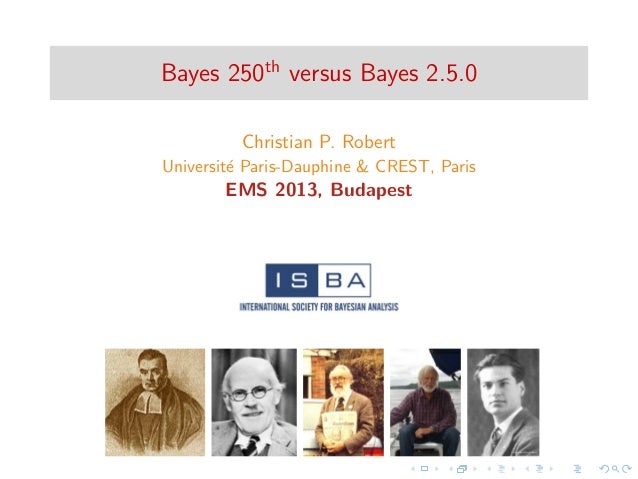 After a fairly long delay (since the first version was posted and submitted in December 2014), we eventually revised and resubmitted our paper with Kaniav Kamary [who has now graduated], Kerrie Mengersen, and Judith Rousseau on the final day of 2018. The main reason for this massive delay is mine’s, as I got fairly depressed by the general tone of the dozen of reviews we received after submitting the paper as a Read Paper in the Journal of the Royal Statistical Society. Despite a rather opposite reaction from the community (an admittedly biased sample!) including two dozens of citations in other papers. (There seems to be a pattern in my submissions of Read Papers, witness our earlier and unsuccessful attempt with Christophe Andrieu in the early 2000’s with the paper on controlled MCMC, leading to 121 citations so far according to G scholar.) Anyway, thanks to my co-authors keeping up the fight!, we started working on a revision including stronger convergence results, managing to show that the approach leads to an optimal separation rate, contrary to the Bayes factor which has an extra √log(n) factor. This may sound paradoxical since, while the Bayes factor converges to 0 under the alternative model exponentially quickly, the convergence rate of the mixture weight α to 1 is of order 1/√n, but this does not mean that the separation rate of the procedure based on the mixture model is worse than that of the Bayes factor. On the contrary, while it is well known that the Bayes factor leads to a separation rate of order √log(n) in parametric models, we show that our approach can lead to a testing procedure with a better separation rate of order 1/√n. We also studied a non-parametric setting where the null is a specified family of distributions (e.g., Gaussians) and the alternative is a Dirichlet process mixture. Establishing that the posterior distribution concentrates around the null at the rate √log(n)/√n. We thus resubmitted the paper for publication, although not as a Read Paper, with hopefully more luck this time!
After a fairly long delay (since the first version was posted and submitted in December 2014), we eventually revised and resubmitted our paper with Kaniav Kamary [who has now graduated], Kerrie Mengersen, and Judith Rousseau on the final day of 2018. The main reason for this massive delay is mine’s, as I got fairly depressed by the general tone of the dozen of reviews we received after submitting the paper as a Read Paper in the Journal of the Royal Statistical Society. Despite a rather opposite reaction from the community (an admittedly biased sample!) including two dozens of citations in other papers. (There seems to be a pattern in my submissions of Read Papers, witness our earlier and unsuccessful attempt with Christophe Andrieu in the early 2000’s with the paper on controlled MCMC, leading to 121 citations so far according to G scholar.) Anyway, thanks to my co-authors keeping up the fight!, we started working on a revision including stronger convergence results, managing to show that the approach leads to an optimal separation rate, contrary to the Bayes factor which has an extra √log(n) factor. This may sound paradoxical since, while the Bayes factor converges to 0 under the alternative model exponentially quickly, the convergence rate of the mixture weight α to 1 is of order 1/√n, but this does not mean that the separation rate of the procedure based on the mixture model is worse than that of the Bayes factor. On the contrary, while it is well known that the Bayes factor leads to a separation rate of order √log(n) in parametric models, we show that our approach can lead to a testing procedure with a better separation rate of order 1/√n. We also studied a non-parametric setting where the null is a specified family of distributions (e.g., Gaussians) and the alternative is a Dirichlet process mixture. Establishing that the posterior distribution concentrates around the null at the rate √log(n)/√n. We thus resubmitted the paper for publication, although not as a Read Paper, with hopefully more luck this time!



